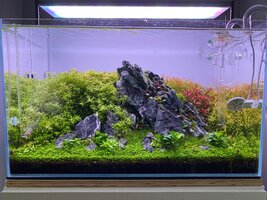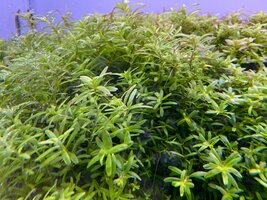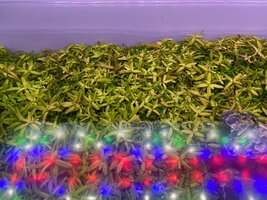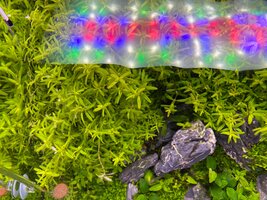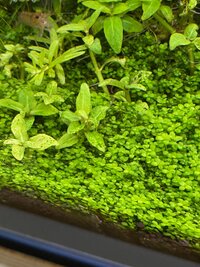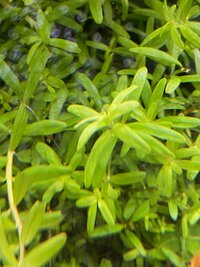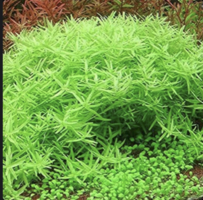McGodes1990
Seedling
Hi all,
I posted last week but unfortunately didn't get any replies so I thought I'd try again. I've been dealing with this issue for the better part of a year now. My plants are growing at a reasonable rate but are growing unsightly and yellow. I can't figure out what I'm missing but since I run high CO2, have great lighting, good O2, great filtration and circulation, I suspect it's a nutrient deficiency. I've dosed home made EI from GLA salts, Tropica specialized, and now APT Complete and the issue persists. This narrows the issue down to Ca/Mg. I use RO water remineralized with Salty Shrimp GH+ to TDS 150 at water changes. This tank has around 20lbs of Seiryu stone so the GH Kh rises significantly by water change day. Today (Thurs) I got a reading of GH 11 and KH6. I do 50% water changes on Sundays.
I'm wondering if I'm experiencing a Mg deficiency because of the high Ca content leeched by the seiryu and that the Salty Shrimp GH+ is simply adding back not enough Mg? Any thoughts on this? Should I replace the salty shrimp with dissolved Epson salts at water changes instead and just ignore Ca due to the Seiryu? This issue is driving me mad so any insight is godsend. Fortunately algae is virtually nonexistent. Just a little GSA on slower growers.
Here are more details on the tank specs:
The Setup:
UNS 60U (about 19 gallons)
Seiryu Stone
UNS Controsoil (seachem root tabs buried in soil)
Pressurized CO2 (5bps, on 2hr before lights, off 1 hr before lights, lime green by 2 hrs after lights on)
Twinstar 600S LED (8 hour photoperiod: 1 hour ramp up from 0-80%, 6 hrs at 80%, 1 hour ramp down from 80%-0)
Oasebiomaster Thermo 350 filter at max flow.
Temp: 22 celcius
Water:
100% 0 TDS RO Water remineralized with Salty Shrimp GH+ to TDS 150ppm. 50% water changes every Sunday.
Today's GH/KH/TDS: 11dGH/6dKH/212ppm (50% change on Sun)
I posted last week but unfortunately didn't get any replies so I thought I'd try again. I've been dealing with this issue for the better part of a year now. My plants are growing at a reasonable rate but are growing unsightly and yellow. I can't figure out what I'm missing but since I run high CO2, have great lighting, good O2, great filtration and circulation, I suspect it's a nutrient deficiency. I've dosed home made EI from GLA salts, Tropica specialized, and now APT Complete and the issue persists. This narrows the issue down to Ca/Mg. I use RO water remineralized with Salty Shrimp GH+ to TDS 150 at water changes. This tank has around 20lbs of Seiryu stone so the GH Kh rises significantly by water change day. Today (Thurs) I got a reading of GH 11 and KH6. I do 50% water changes on Sundays.
I'm wondering if I'm experiencing a Mg deficiency because of the high Ca content leeched by the seiryu and that the Salty Shrimp GH+ is simply adding back not enough Mg? Any thoughts on this? Should I replace the salty shrimp with dissolved Epson salts at water changes instead and just ignore Ca due to the Seiryu? This issue is driving me mad so any insight is godsend. Fortunately algae is virtually nonexistent. Just a little GSA on slower growers.
Here are more details on the tank specs:
The Setup:
UNS 60U (about 19 gallons)
Seiryu Stone
UNS Controsoil (seachem root tabs buried in soil)
Pressurized CO2 (5bps, on 2hr before lights, off 1 hr before lights, lime green by 2 hrs after lights on)
Twinstar 600S LED (8 hour photoperiod: 1 hour ramp up from 0-80%, 6 hrs at 80%, 1 hour ramp down from 80%-0)
Oasebiomaster Thermo 350 filter at max flow.
Temp: 22 celcius
Water:
100% 0 TDS RO Water remineralized with Salty Shrimp GH+ to TDS 150ppm. 50% water changes every Sunday.
Today's GH/KH/TDS: 11dGH/6dKH/212ppm (50% change on Sun)


